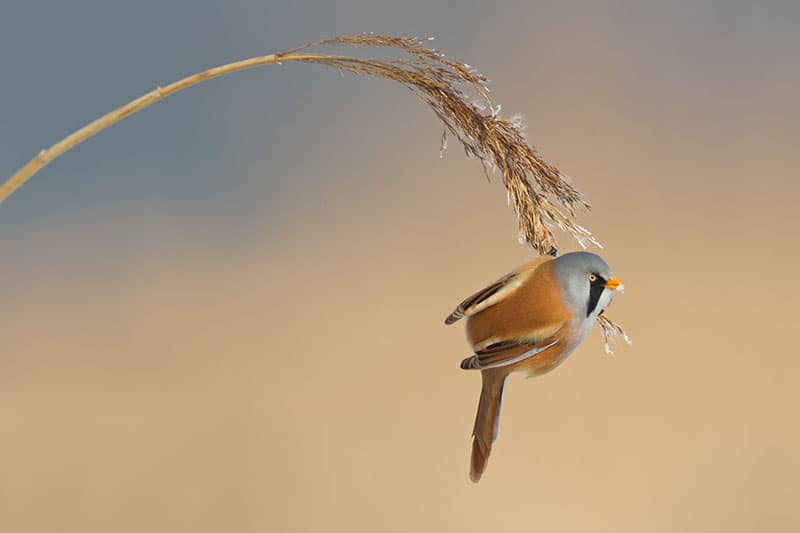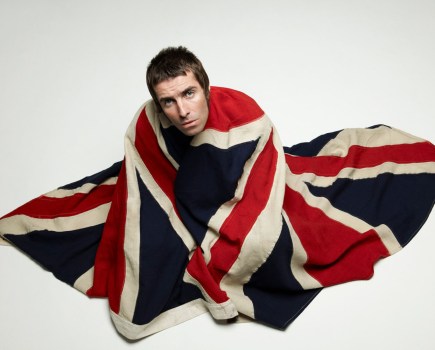Photo Insight with Jeroen Stel – Bearded Reedling Bird

Jeroen Stel left his job as a fashion designer several years ago in order to follow his passion for wildlife photography. Since then, he has been working full-time as a freelance wildlife photographer and has gained many prizes and accolades, including an International Photography Award (IPA) in 2012. Jeroen has a great passion for macro and bird photography, and is a member of the Canon Professional Services system
I took this image at a wildlife reserve here in the Netherlands called De Rietputten. It’s a very small reedland reserve that is close to Rotterdam. There’s some controversy around the area at the moment because of plans to dig a tunnel, called De Blankenburgtunnel, straight through it, which would destroy the reserve. I hope this won’t happen, but I fear it will, so this was partly why I wanted to shoot images there, to make it clear what is in the area and what is being threatened. There is a chance that I’ll never get the opportunity to visit this reserve again.
This picture shows a bearded reedling. These birds eat insects during the summer and the seeds of the reed plants in winter, once the frost kicks in. This is the only time of year they tend to venture outside of the reed beds. It had been very cold for about a week and a half before I took this photograph, so I knew these birds, and others, would be coming out to feed and it would be easier to get close to them.
This image was really a case of a quick ‘focus, compose, shoot’ sequence. I used a Canon EOS-1D Mark IV with a 600mm f/4 lens. Despite the telephoto focal length of this lens I really wasn’t that far away, probably about 10 or 15 metres, so just a little further than the minimum focal distance of the lens. These birds are fairly easy to get close to – this one had noticed me, but they are used to limited human contact from the footpath that goes around the area.
Bearded reedlings are quite fast moving as they hop from reed stem to reed stem. This one, however, was just hanging on a little bit longer to find its balance as its weight caused the stem to curve down. This meant the bird came out of the reed bed, which provided me with a great opportunity to photograph it. That bending of the reed was really what made the image, compositionally.

I was able to get a nice shallow depth of field because of the way the reed stem was bending – it made itself stick out quite clearly from the reed bed. When I photograph wildlife I tend to shoot at as low an f-number as I can, usually somewhere between f/4 and f/5.6. I like a shallow depth of field, and I like to get the animal itself as sharp as I can. The aim is to isolate the animal as much as possible in the image, which in this case was made much easier by the way the bird had brought itself out of the bed.
I was trying to keep the image quite simple. I like to try to break rules of composition sometimes, particularly when I’m dealing with smaller subjects, as I prefer to put them close to the edge of the frame. I also like to play with leading lines, particularly leading lines towards the subject, as I have done in this image. The way the bird has positioned itself and its tail creates an interesting angle that doesn’t quite play out the way you expect it to.
I was using a flash with a Better Beamer flash extender attached, giving me just a little more light than in a regular shot. A Better Beamer is a device, somewhat like a plastic lens, that gives you a little more reach when using a flash. Having that extra light gives me more versatility, which I like. It opens up the details a little in the shadows, and the details are very important in this image.
The colours of the bird are mirrored in the colours of the background. This is something I tend to look for, often without knowing it. For instance, if I photographed tree frogs, I might try to look for similar vivid colours in the background. I’m a fashion designer by origin, which might be why I find myself drawn to complementary colours. It’s something I do often without really thinking about it.
I was aiming to show what we’d stand to lose if this reserve were to be demolished. I was really hoping that some of the images I shot would be published and I could use them to demonstrate to people that the area should be preserved. This picture was published in the Dutch Bird Protection Society magazine, so I was able to add some of my comments and illustrate what a shame it would be if this area disappeared.
To see more of Jeroen’s images, visit his website at www.jeroenstel.com
Jeroen Stel was talking to Jon Stapley







